Gustiamo proudly announces: Pasta Faella will soon be in our warehouse!!! Camille pays a visit to the historic pastificio in Gragnano and writes her lovely journal, below.
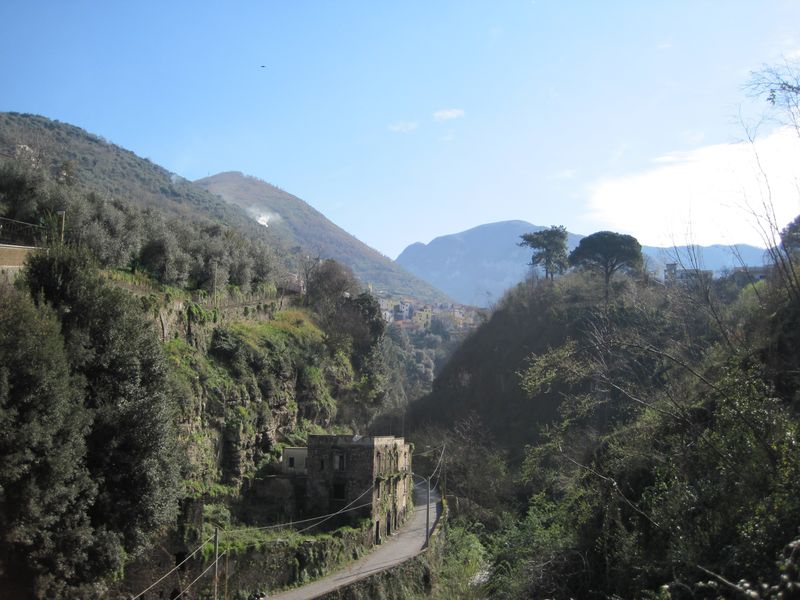
I’ve been looking forward to visiting Faella, a pastificio located in Gragnano, a historical center of pasta production, for a month now. So when Sergio came by the hostel Sunday morning at 9 am to pick me up, I couldn’t believe I was actually on my way! Luckily, being a Sunday, the roads were relatively clear and we made it to Gragnano from Napoli in about 30 minutes. Along the way Sergio pointed out Mount Vesuvius, Capri, and the Sorrento coast. We wound through the tiny streets of the surrounding communities, including his hometown, Castellammare, before beginning the descent into Gragnano through the Valle dei Mulini (above), a ravine that makes Gragnano perfectly suited for pasta production (Gragnano was the first center of pasta production in mainland Italy, and Faella has been around for a century . Today, there are only 8 or 9 pastifici left in Gragnano, but Faella is committed to offering the same quality of pasta they always have – this is pasta with a history, something we don’t see much of in the U.S.).
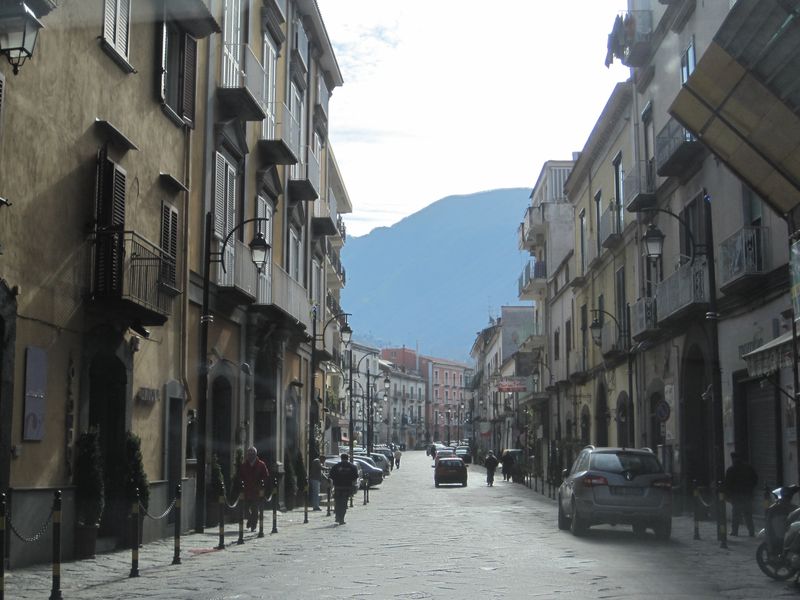
Because Gragnano is at the base of the valley, between the mountains and the sea, a strong wind blows through the valley and the tiny, curving streets of the town, where the pastificio of old used to grind their semolina grain to flour and dry their pasta. Via Roma (left) is the most famous of these streets, and 50 or 60 years ago it was lined with hanging pasta. Today, due to government restrictions on hygiene, you won’t see any pasta on the street. But Gragnano still has the advantage: the water from the nearby mountains is still used and the climate of the town is well suited for pasta production.
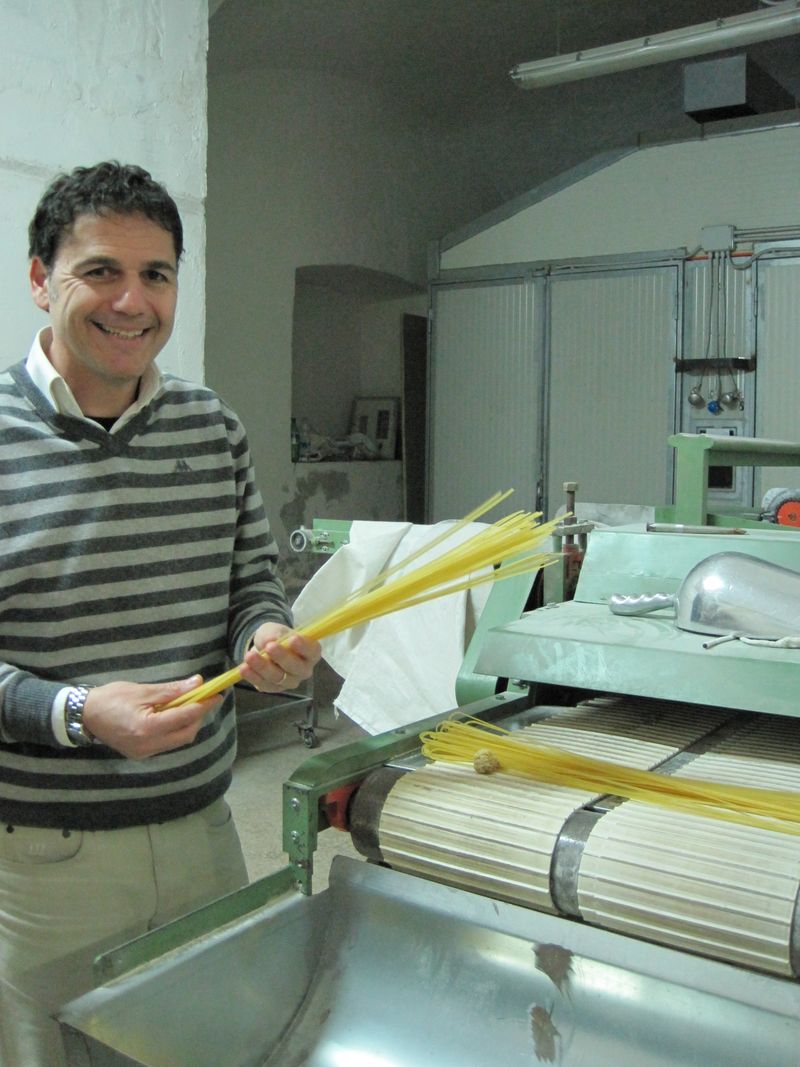 Sergio explained the difference that the temperature makes: industrial pasta is dried at temperatures around 100 degrees Celsius (212 degrees Fahrenheit), whereas Faella dries it pasta at around 48-50 degrees (118-122 Fahrenheit). Because the temperature is so much lower, it takes a lot longer to complete the production process: around two days start to finish, and the drying can take anywhere from 20 to 50 hours depending on the length and thickness of the pasta. But the extra time is worth it – have you noticed that when you pour a box or bag of mass-produced pasta into boiling water, the first smell you get is one of the packaging it came in? (very cardboard or plastic-esque). Pasta dried at lower temperatures keeps the taste and smell of its semolina much better than pasta dried at hotter temperatures. You’ll have to try it to experience the difference!
Sergio explained the difference that the temperature makes: industrial pasta is dried at temperatures around 100 degrees Celsius (212 degrees Fahrenheit), whereas Faella dries it pasta at around 48-50 degrees (118-122 Fahrenheit). Because the temperature is so much lower, it takes a lot longer to complete the production process: around two days start to finish, and the drying can take anywhere from 20 to 50 hours depending on the length and thickness of the pasta. But the extra time is worth it – have you noticed that when you pour a box or bag of mass-produced pasta into boiling water, the first smell you get is one of the packaging it came in? (very cardboard or plastic-esque). Pasta dried at lower temperatures keeps the taste and smell of its semolina much better than pasta dried at hotter temperatures. You’ll have to try it to experience the difference!
Faella is every bit “artigianale” – while they have several machines (mostly to mix the semolina with water to form the dough), they also do a lot of the work by hand. The pastificio produces around 2,000 kilo (around 4,400 pounds) of pasta per day with around 7 employees, so while small-scale, they really invest the time and effort necessary to make the best product possible. They use trafila al bronzo (bronze plates) which gives the pasta its rough texture and they make around 40 different shapes of pasta, corte (short) and lunghe (long), many of which I’ve never before seen or heard of.
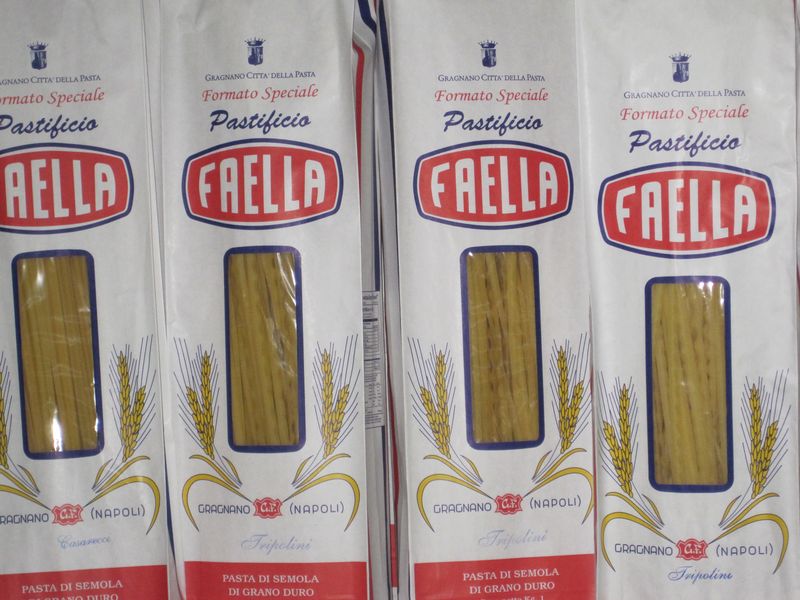
Since I know how hard it is to find anything other than industrially produced pasta in the U.S., and now that I understand the difference with artisanal pasta, I’m really looking forward to having Faella’s pasta available through Gustiamo!
Sergio’s tour of Gragnano and his pastificio was unforgettable, but that’s not even the end of my day – there’s an 7 course meal to tell you about and a visit with Sabatino of Terra Amore & Fantasia! To be continued…
Camille Frazier
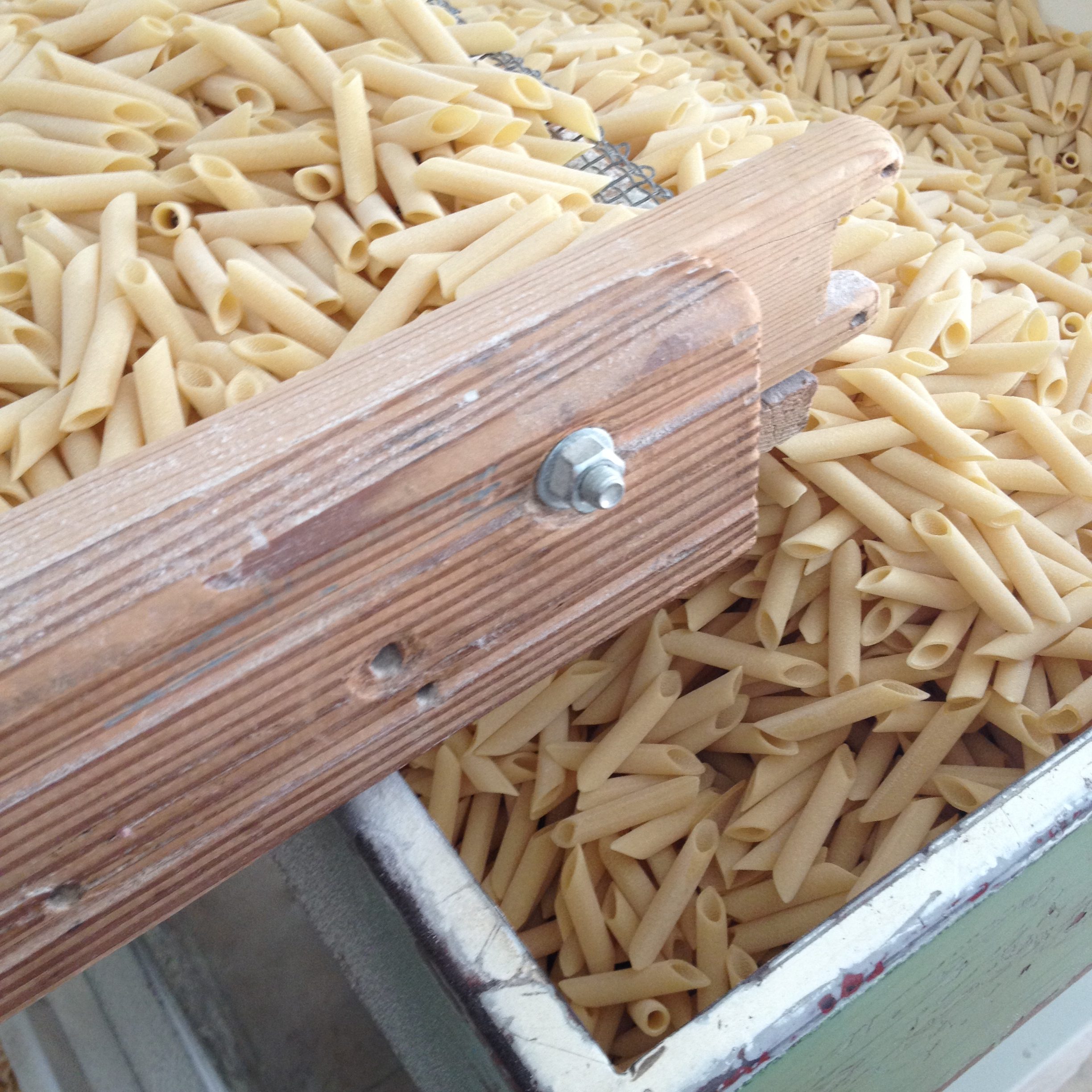
Hello to you Camille ,
I hope the rest of the tour in Italy knows went well. !
The pleasure to have you here at Gragnano was all mine, I would have liked to have more time to get to visit other wonderful and often unknown places of our land.
I am convinced that when you work with passion she always manages to convey to others a precious value and Faella us with our pasta we sell not only a healthy and tasty food but a “Emotion”
I saw your blog and I feel very well convey the simplicity and the typicality of the places, people and their arts.
Great job!
A greeting and thanks to you, … to Zac and …. to all the staff of Gustiamo Inc
Cordiali saluti e buon lavoro
Sergio and his staff
ciao Sergio, our freightforwarder just told us your pasta will be in the Bronx in a couple of weeks. i can’t wait. what shall we do to celebrate the big opening? do you have a particular recipe we can share with our American friends? ciao e a presto. bravo!
Hello Camille ~ My husband and I are makers of handcrafted artisan pasta in Sonoma County, California, and visited Gragnano last September. We also met Mario at Faella and several other pastafici artiginali in Gragnano and outside of Naples. We were received with warm welcomes in every factory we visited and were pleased to discover that our classical small batch mixing and low-temperature drying methods are indeed in direct harmony with the classical Italian processes on which our small factory and procedures were modeled 20 years ago. I am happy to find your blog and will visit Gustiamo online. Faella pasta quickly became a favorite on our month-long trip and we cooked it every chance we got. Visit our Pasta Sonoma page on Facebook. That and our new website are in development. Saluti cordiali,
Susan Contesini Luber.
Grazie Mille Susan! We love hearing from Pasta Faella lovers. Check out the conversation we had with Sergio from Pasta Faella the other day in Torino http://www.youtube.com/watch?v=XYFr3U8o9xY